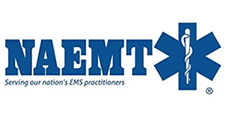- Office Phone:
- (718) 631-3333
- Office Hours:
- Mon - Sat: 9:00 AM to 12:00 PM - Sun: Closed

Understanding the Hazards of Heat Stroke, Heat Exhaustion, and Dehydration
As the summer sun blazes, it's crucial to be aware of the risks associated with high temperatures. Heat stroke, heat exhaustion, and dehydration are serious conditions that can affect anyone, especially during hot weather. In this blog, we'll explore these hazards in simple terms, helping you understand how they impact the human body and how to stay safe.
Heat Stroke: The Silent Killer
What is Heat Stroke?
Heat stroke is a life-threatening condition that occurs when your body temperature rises to dangerous levels, typically above 104°F (40°C). This happens because your body can't cool itself down effectively, leading to overheating.
Symptoms of Heat Stroke
Recognizing the signs of heat stroke is crucial for timely intervention. Key symptoms include:
- High body temperature: A core body temperature of 104°F (40°C) or higher.
- Altered mental state: Confusion, agitation, slurred speech, irritability, or seizures.
- Hot, dry skin: The skin may feel hot and dry to the touch, or you might notice profuse sweating.
- Rapid heartbeat: A strong and rapid pulse as your body tries to cool down.
- Nausea and vomiting: Feeling sick to your stomach or actually throwing up.
Why is Heat Stroke Dangerous?
Heat stroke can cause severe damage to your organs, including your brain, heart, kidneys, and muscles. Without prompt treatment, it can lead to serious complications or even death.
Preventing Heat Stroke
To prevent heat stroke, it's essential to:
- Stay hydrated: Drink plenty of water, even if you don't feel thirsty.
- Avoid strenuous activities: Limit physical exertion during the hottest parts of the day.
- Wear appropriate clothing: Light, loose-fitting clothes help your body cool down.
- Seek shade or air conditioning: Spend time in cooler environments whenever possible.
Heat Exhaustion: The Warning Sign
What is Heat Exhaustion?
Heat exhaustion is a condition that occurs when your body loses excessive water and salt through sweating. It's less severe than heat stroke but can progress to it if not addressed.
Symptoms of Heat Exhaustion
Common signs of heat exhaustion include:
- Heavy sweating: Profuse perspiration is your body's attempt to cool down.
- Weakness or fatigue: Feeling extremely tired and weak.
- Cold, clammy skin: Your skin may feel cool and moist to the touch.
- Dizziness or fainting: You might feel lightheaded or even pass out.
- Nausea or vomiting: An upset stomach or vomiting can occur.
- Muscle cramps: Painful cramps, especially in your legs or abdomen.
Why is Heat Exhaustion Dangerous?
If untreated, heat exhaustion can escalate to heat stroke. It's essential to recognize the symptoms and take action to cool down and rehydrate.
Preventing Heat Exhaustion
To prevent heat exhaustion:
- Hydrate regularly: Drink water and sports drinks to replenish lost fluids and electrolytes.
- Take breaks: Rest in cool, shaded areas if you're working or exercising in the heat.
- Dress appropriately: Wear light and breathable clothing.
- Know your limits: Avoid overexertion and listen to your body's signals.
Dehydration: The Silent Threat
What is Dehydration?
Dehydration occurs when your body loses more fluids than it takes in, leading to an imbalance that affects normal bodily functions. It can happen quickly in hot weather or during physical activity.
Symptoms of Dehydration
Recognizing dehydration is key to preventing more serious conditions. Symptoms include:
- Thirst: Feeling very thirsty is an early sign.
- Dry mouth and skin: Your mouth may feel dry, and your skin might lose its elasticity.
- Dark urine: Urine that's dark in color is a sign of dehydration.
- Fatigue: Feeling unusually tired and lacking energy.
- Dizziness: Feeling lightheaded or dizzy, especially when standing up.
- Confusion: Difficulty concentrating or thinking clearly.
Why is Dehydration Dangerous?
Dehydration can lead to heat exhaustion and heat stroke, as well as kidney problems, urinary tract infections, and other health issues. Severe dehydration is a medical emergency and requires immediate attention.
Preventing Dehydration
To stay hydrated and prevent dehydration:
- Drink plenty of fluids: Water is best, but sports drinks can help replenish electrolytes lost through sweat.
- Eat water-rich foods: Fruits and vegetables like watermelon, cucumbers, and oranges can help keep you hydrated.
- Monitor fluid loss: Pay attention to how much you're sweating and urinating, and drink more fluids if needed.
- Avoid alcohol and caffeine: These can increase fluid loss and contribute to dehydration.
Taking Action: What to Do in an Emergency
Recognizing an Emergency
If you or someone else shows signs of heat stroke, heat exhaustion, or severe dehydration, it's critical to act quickly:
- Move to a cooler place: Get out of the sun and into a shaded or air-conditioned area.
- Hydrate: Drink water or a sports drink to replenish fluids.
- Cool down: Use cool water, wet cloths, or ice packs to lower body temperature.
- Seek medical help: If symptoms are severe or don't improve, call emergency services immediately.
Quick Response Saves Lives
Timely intervention can prevent serious complications and save lives. Don't hesitate to seek help if you're unsure about the severity of the symptoms.
Understanding the hazards of heat stroke, heat exhaustion, and dehydration is essential for staying safe during hot weather. By recognizing the signs, taking preventive measures, and knowing how to respond in an emergency, you can protect yourself and others from these dangerous conditions. Stay cool, stay hydrated, and enjoy the summer safely!





